-
 Bitcoin
Bitcoin $113900
-1.39% -
 Ethereum
Ethereum $3517
-4.15% -
 XRP
XRP $3.009
1.59% -
 Tether USDt
Tether USDt $0.9997
-0.04% -
 BNB
BNB $766.8
-1.41% -
 Solana
Solana $164.6
-2.38% -
 USDC
USDC $0.9998
-0.02% -
 TRON
TRON $0.3277
0.65% -
 Dogecoin
Dogecoin $0.2023
-1.67% -
 Cardano
Cardano $0.7246
0.05% -
 Hyperliquid
Hyperliquid $38.27
-4.77% -
 Sui
Sui $3.528
-0.52% -
 Stellar
Stellar $0.3890
-0.73% -
 Chainlink
Chainlink $16.16
-2.69% -
 Bitcoin Cash
Bitcoin Cash $539.9
-4.38% -
 Hedera
Hedera $0.2425
-2.00% -
 Avalanche
Avalanche $21.71
-0.97% -
 Toncoin
Toncoin $3.662
5.73% -
 Ethena USDe
Ethena USDe $1.000
-0.02% -
 UNUS SED LEO
UNUS SED LEO $8.964
0.35% -
 Litecoin
Litecoin $107.7
2.33% -
 Shiba Inu
Shiba Inu $0.00001223
-0.40% -
 Polkadot
Polkadot $3.617
-0.97% -
 Uniswap
Uniswap $9.052
-2.49% -
 Monero
Monero $295.1
-3.79% -
 Dai
Dai $0.9999
0.00% -
 Bitget Token
Bitget Token $4.315
-1.85% -
 Pepe
Pepe $0.00001060
0.11% -
 Cronos
Cronos $0.1342
-2.72% -
 Aave
Aave $256.0
-0.87%
Is MetaMask safe to use for storing large amounts of cryptocurrency?
MetaMask is secure if used correctly, but its software nature makes it vulnerable to phishing, malware, and user error—always safeguard your recovery phrase and consider pairing it with a hardware wallet for larger holdings.
Aug 02, 2025 at 05:36 am
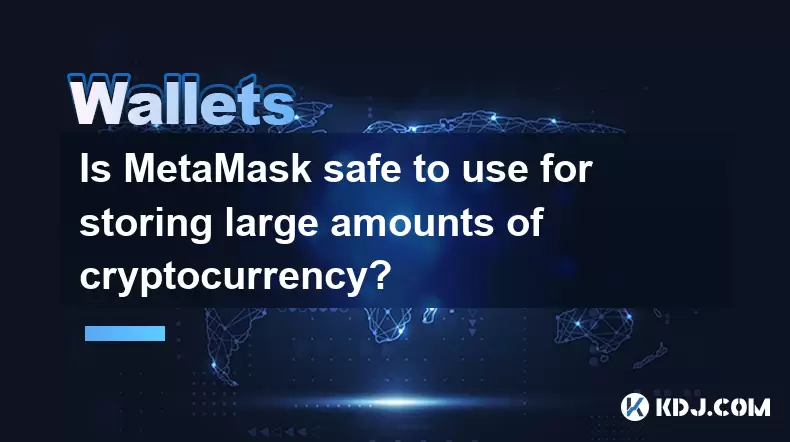
Understanding MetaMask’s Security Model
MetaMask is a browser extension and mobile application that functions as a non-custodial cryptocurrency wallet, meaning users retain full control over their private keys. This design ensures that no third party, including MetaMask itself, can access your funds. The wallet generates a 12-word recovery phrase during setup, which serves as the master key to restore access to your assets. This phrase must be stored securely offline, as anyone with access to it can take full control of the associated wallet.
The private keys are encrypted and stored locally on your device, never transmitted to external servers. This local storage model enhances security, but it also means that if your device is compromised or lost without a backup of the recovery phrase, your funds may be irretrievable. MetaMask uses industry-standard cryptographic protocols such as PBKDF2 and AES-256 encryption to protect the wallet data.
However, being a software wallet, MetaMask is inherently more exposed to risks than hardware wallets. It runs on general-purpose devices like smartphones and computers, which are susceptible to malware, phishing attacks, and keyloggers. For this reason, relying solely on MetaMask for large amounts of cryptocurrency introduces higher risk exposure compared to cold storage solutions.
Threats Associated with Software Wallets
While MetaMask is widely used and generally considered reliable, its software nature exposes it to several potential threats. Phishing attacks are among the most common risks. Malicious websites can mimic legitimate dApps or MetaMask login screens to trick users into entering their recovery phrase or approving unauthorized transactions.
Another significant risk is malware and browser extensions. If a user installs a malicious browser add-on, it could intercept keystrokes or modify transaction details without the user’s knowledge. For instance, a trojan could change the destination address in a transaction, redirecting funds to an attacker’s wallet.
Device compromise is another critical concern. If a computer or smartphone is infected with spyware, attackers might gain access to the encrypted wallet or even the recovery phrase if it was stored digitally. Even screen recording malware can capture sensitive information during wallet interactions.
Furthermore, social engineering attacks often target users who hold large amounts of cryptocurrency. Attackers may impersonate MetaMask support staff or project teams to extract private information. MetaMask will never ask for your recovery phrase, and any such request should be treated as a red flag.
Best Practices for Securing MetaMask
To enhance the safety of using MetaMask for significant holdings, several security measures must be strictly followed:
- Never share your 12-word recovery phrase with anyone, and avoid storing it in digital formats such as notes, emails, or cloud storage.
- Use a dedicated, secure device exclusively for cryptocurrency activities, free from unnecessary software and browser extensions.
- Install reputable antivirus and anti-malware software and keep the operating system and browser updated.
- Enable two-factor authentication (2FA) on any associated accounts, such as email, to prevent unauthorized access to recovery options.
- Always verify website URLs before connecting your wallet, especially when interacting with decentralized applications (dApps).
- Consider using a hardware wallet in conjunction with MetaMask. MetaMask supports integration with devices like Ledger and Trezor, allowing private keys to remain on the hardware device while using MetaMask as an interface.
Additionally, regularly review connected dApps and revoke access to those no longer in use. This can be done through the MetaMask interface under "Connected sites." Unnecessary permissions increase the attack surface.
MetaMask Institutional vs. Personal Use
MetaMask offers MetaMask Institutional (MMI), a version tailored for enterprises and high-net-worth individuals. This variant includes enhanced security features such as multi-signature support, institutional-grade custody integrations, and dedicated support. While the standard MetaMask is designed for retail users, MMI provides additional layers of protection suitable for managing large portfolios.
For personal users holding substantial assets, relying solely on the consumer version may not be optimal. Integrating MetaMask with a hardware wallet effectively bridges the gap between convenience and security. When connected to a Ledger or Trezor, transaction signing occurs on the hardware device, ensuring private keys never leave the secure environment.
Even with these integrations, the responsibility of security remains with the user. The interface may still be vulnerable to UI manipulation, so always double-check transaction details on the hardware device’s screen before approval.
Comparing MetaMask to Cold Storage Solutions
Cold wallets, such as Ledger Nano X or Trezor Model T, store private keys offline and are widely regarded as the safest method for holding large amounts of cryptocurrency. Unlike MetaMask, which operates online, cold wallets are immune to remote hacking when not in use.
Transferring a significant portion of funds to a hardware wallet while using MetaMask for daily transactions is a balanced approach. This strategy limits exposure while maintaining usability. MetaMask can act as a "hot wallet" for active trading or DeFi interactions, while the majority of assets remain in cold storage.
Another alternative is multi-signature wallets like Gnosis Safe, which require multiple keys to authorize transactions. These can be integrated with MetaMask and provide an extra layer of security, especially for joint holdings or institutional use.
Ultimately, no single solution eliminates all risks, but combining MetaMask with hardware-backed signing or multi-sig setups significantly reduces vulnerabilities.
Frequently Asked Questions
Can MetaMask be hacked directly?
MetaMask as an application cannot be remotely hacked in the traditional sense because private keys are stored locally. However, the device running MetaMask can be compromised through malware or phishing, which may lead to fund loss. The wallet itself is open-source and audited, but user behavior and device security are critical factors.
What should I do if I lose my MetaMask wallet?
If you lose access to your device, you can restore your wallet using the 12-word recovery phrase on another device. Install MetaMask, choose "Import wallet," and enter the phrase. Without the recovery phrase, there is no way to regain access, and funds will be permanently lost.
Is it safe to use MetaMask on a mobile phone?
Using MetaMask on a mobile device is generally safe if the phone is secured with a strong passcode, biometric authentication, and no rooted/jailbreak modifications. Avoid downloading apps from untrusted sources and only use the official MetaMask app from the App Store or Google Play.
Can I use MetaMask with a VPN?
Yes, using a reputable VPN can add a layer of privacy when interacting with dApps. However, a VPN does not protect against phishing or malware. Ensure the VPN provider is trustworthy, as malicious VPNs can monitor or intercept data.
Disclaimer:info@kdj.com
The information provided is not trading advice. kdj.com does not assume any responsibility for any investments made based on the information provided in this article. Cryptocurrencies are highly volatile and it is highly recommended that you invest with caution after thorough research!
If you believe that the content used on this website infringes your copyright, please contact us immediately (info@kdj.com) and we will delete it promptly.
- Phishing, Wallets, and Stolen Funds: Staying Safe in the Wild West of Crypto
- 2025-08-02 16:30:12
- Rare Coin Alert: Is That 50p in Your Pocket Worth £10,000?
- 2025-08-02 16:30:12
- Arbitrum (ARB) Price Prediction: Oversold Signal or Breakout Imminent?
- 2025-08-02 16:55:36
- Arbitrum (ARB): Navigating Price Dips, PayPal Perks, and the Road Ahead
- 2025-08-02 17:00:12
- CoinDCX, Coinbase, and Cyber Heists: A Crypto Rollercoaster
- 2025-08-02 14:30:12
- Solana, Axiom Exchange, and Revenue: Navigating the Future of DeFi
- 2025-08-02 12:50:12
Related knowledge

What is a watch-only wallet in Trust Wallet?
Aug 02,2025 at 03:36am
Understanding the Concept of a Watch-Only WalletA watch-only wallet in Trust Wallet allows users to monitor a cryptocurrency address without having ac...

How to switch between networks in Trust Wallet?
Aug 02,2025 at 12:36pm
Understanding Network Switching in Trust WalletSwitching between networks in Trust Wallet allows users to manage assets across different blockchains s...
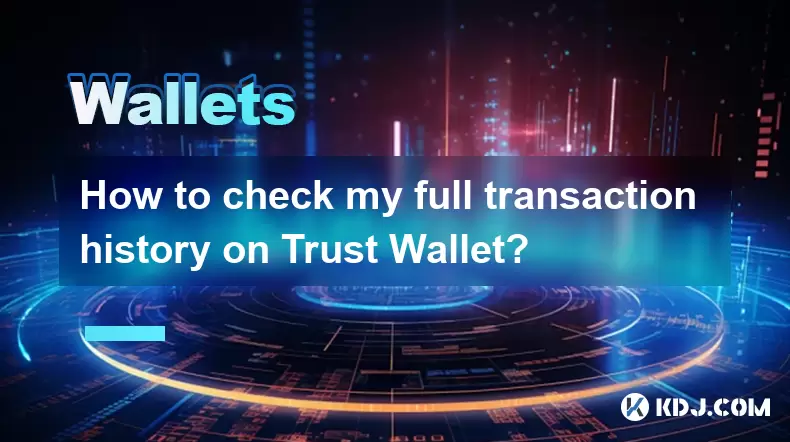
How to check my full transaction history on Trust Wallet?
Aug 02,2025 at 09:24am
Understanding Transaction History in Trust WalletTrust Wallet is a widely used non-custodial cryptocurrency wallet that supports a broad range of bloc...
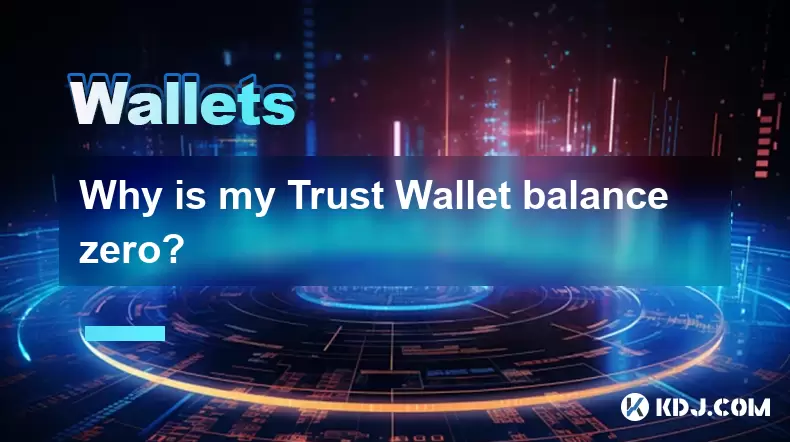
Why is my Trust Wallet balance zero?
Aug 02,2025 at 03:49am
Understanding Trust Wallet Balance Display IssuesIf you're seeing a zero balance in your Trust Wallet despite knowing you've previously received or se...
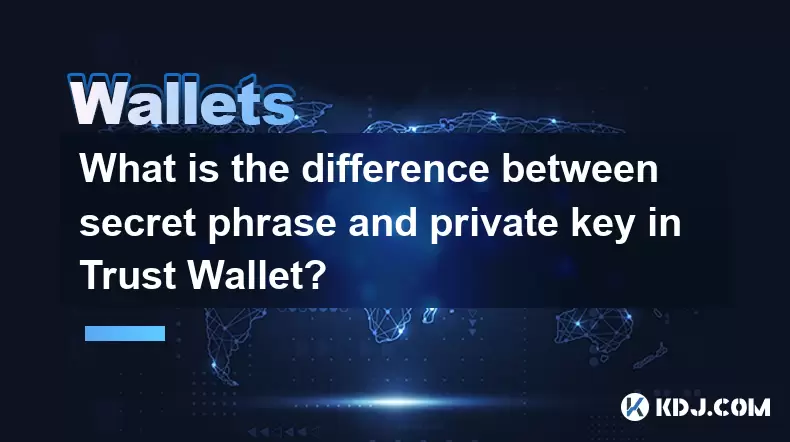
What is the difference between secret phrase and private key in Trust Wallet?
Aug 02,2025 at 09:49am
Understanding the Role of a Secret Phrase in Trust WalletThe secret phrase, also known as a recovery phrase or seed phrase, is a sequence of 12 or 24 ...
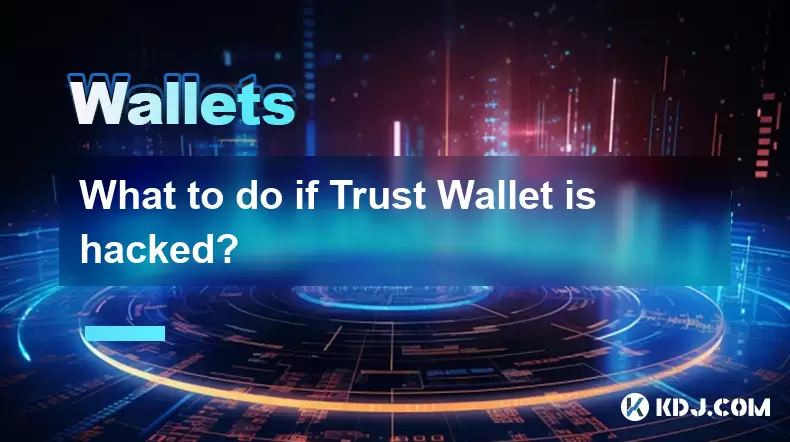
What to do if Trust Wallet is hacked?
Aug 02,2025 at 03:56pm
Immediate Actions to Take If Your Trust Wallet Is CompromisedIf you suspect that your Trust Wallet has been hacked, the first priority is to act swift...

What is a watch-only wallet in Trust Wallet?
Aug 02,2025 at 03:36am
Understanding the Concept of a Watch-Only WalletA watch-only wallet in Trust Wallet allows users to monitor a cryptocurrency address without having ac...

How to switch between networks in Trust Wallet?
Aug 02,2025 at 12:36pm
Understanding Network Switching in Trust WalletSwitching between networks in Trust Wallet allows users to manage assets across different blockchains s...

How to check my full transaction history on Trust Wallet?
Aug 02,2025 at 09:24am
Understanding Transaction History in Trust WalletTrust Wallet is a widely used non-custodial cryptocurrency wallet that supports a broad range of bloc...

Why is my Trust Wallet balance zero?
Aug 02,2025 at 03:49am
Understanding Trust Wallet Balance Display IssuesIf you're seeing a zero balance in your Trust Wallet despite knowing you've previously received or se...

What is the difference between secret phrase and private key in Trust Wallet?
Aug 02,2025 at 09:49am
Understanding the Role of a Secret Phrase in Trust WalletThe secret phrase, also known as a recovery phrase or seed phrase, is a sequence of 12 or 24 ...

What to do if Trust Wallet is hacked?
Aug 02,2025 at 03:56pm
Immediate Actions to Take If Your Trust Wallet Is CompromisedIf you suspect that your Trust Wallet has been hacked, the first priority is to act swift...
See all articles

























































































